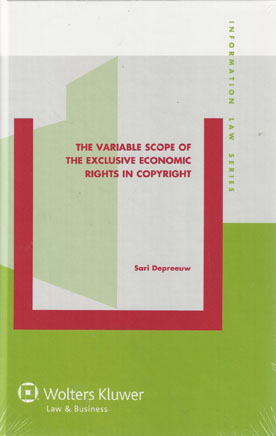
Which ‘uses’ of a work can an author protect and which exclusive economic rights under copyright can she rely upon to exercise this control?
There was a time when the answer was straightforward, but with each major technological development it takes a while before the legal protection is recalibrated to the new situation, the techniques and the new economic exploitations they enabled. Today the understanding of the uses protected under copyright has become bewilderingly complex because of digital technologies and the profound changes they brought to the world we live in.
This book offers a thorough analysis of the question of the scope of protection under current international and European law, one cannot find a clearer explication – or more useful recommendations – than in this book.
The author describes two distinct but interwoven aspects of copyright: the reproduction right, and the rights of communication to the public. These aspects are examined as they are touched upon under several international instruments, including the Berne Convention and the WIPO Copyright Treaty and in European law under the Computer Programs Directive, the Directive on Satellite and Cable, the Database Directive and the Information Society Directive and their interpretation by the European Court of Justice.
The author pays particular attention to the role that technologies play in relation to the definition of the protected act and to the exploitation of the work. In a concluding chapter, she lays bare the central object of protection of the exploitation rights, and proposes a method to align the scope of protection of both rights to this central object, spelling out principles that must be observed in order to achieve a more consistent protection that is less vulnerable to technical contingencies.
Along the way all the essential issues arise for discussion. These include the following:-
This book stands out for its dedicated effort to sever the relevant characteristics from the irrelevant ones in current copyright matters, and to apply criteria that embody the protection that copyright was meant to confer on (certain) uses enabled by new technologies. Its remarkable insights will greatly assist interested lawyers and academics to better understand the role of complex digital network technologies in copyright law, and how to approach such technologies as they work to protect authors from unauthorized exploitation.